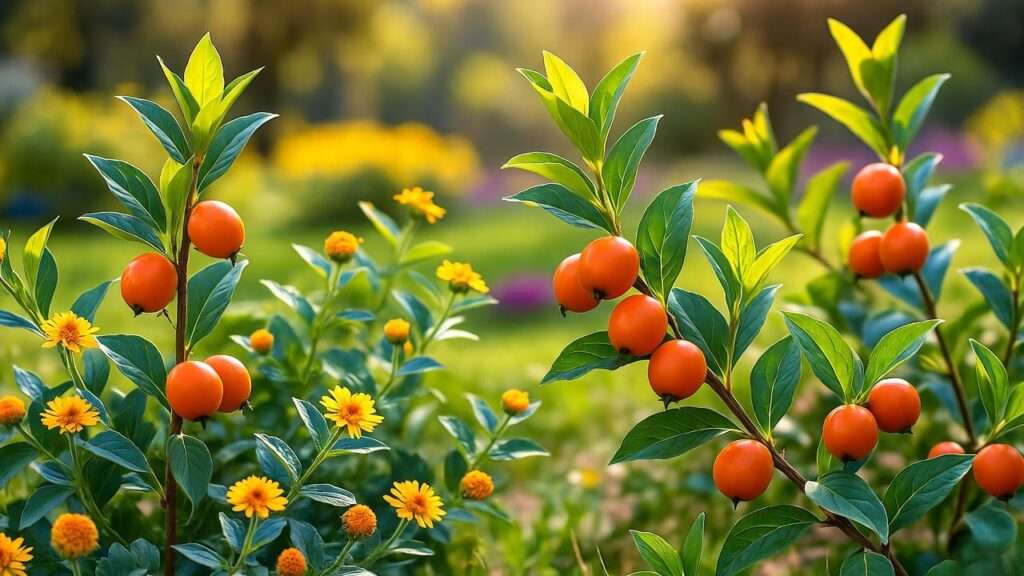Imagine biting into a sweet-tart golden berry, fresh from your own garden, its vibrant flavor bursting with tropical sunshine. 🌞 Golden berry plants, also known as Cape gooseberries or Physalis peruviana, are a delightful addition to any garden, offering nutrient-packed fruits and easy-care growth. Whether you’re a novice gardener or a seasoned green thumb, mastering golden berry plant care can transform your backyard into a fruitful paradise. As a horticulturist with over a decade of experience growing exotic fruits, I’ve seen firsthand how these charming plants thrive with the right techniques. In this comprehensive guide, I’ll share seven expert tips to help you grow healthy, fruit-filled golden berry bushes, even if you’re starting from scratch. Backed by insights from agricultural research, including studies from the University of Florida’s tropical fruit program, this article will equip you with everything you need to succeed. Ready to grow your own golden berry bounty? Let’s get started! 🍒
What Are Golden Berry Plants? An Overview 🌿
Botanical Background and Unique Characteristics
Golden berry plants (Physalis peruviana) are members of the nightshade family, closely related to tomatoes and tomatillos. Native to South America, particularly Peru and Colombia, these plants are prized for their small, golden-yellow fruits encased in delicate, papery husks. 🌾 The husks not only protect the berries but also give them a whimsical, lantern-like appearance. Growing 2-3 feet tall, golden berry plants are compact, making them ideal for gardens of all sizes. Their fruits are nutritional powerhouses, rich in vitamins C and A, antioxidants, and fiber, according to research from Cornell University’s Department of Horticulture. Whether eaten fresh, dried, or in jams, golden berries offer a tart-sweet flavor that’s a hit with foodies and health enthusiasts alike.
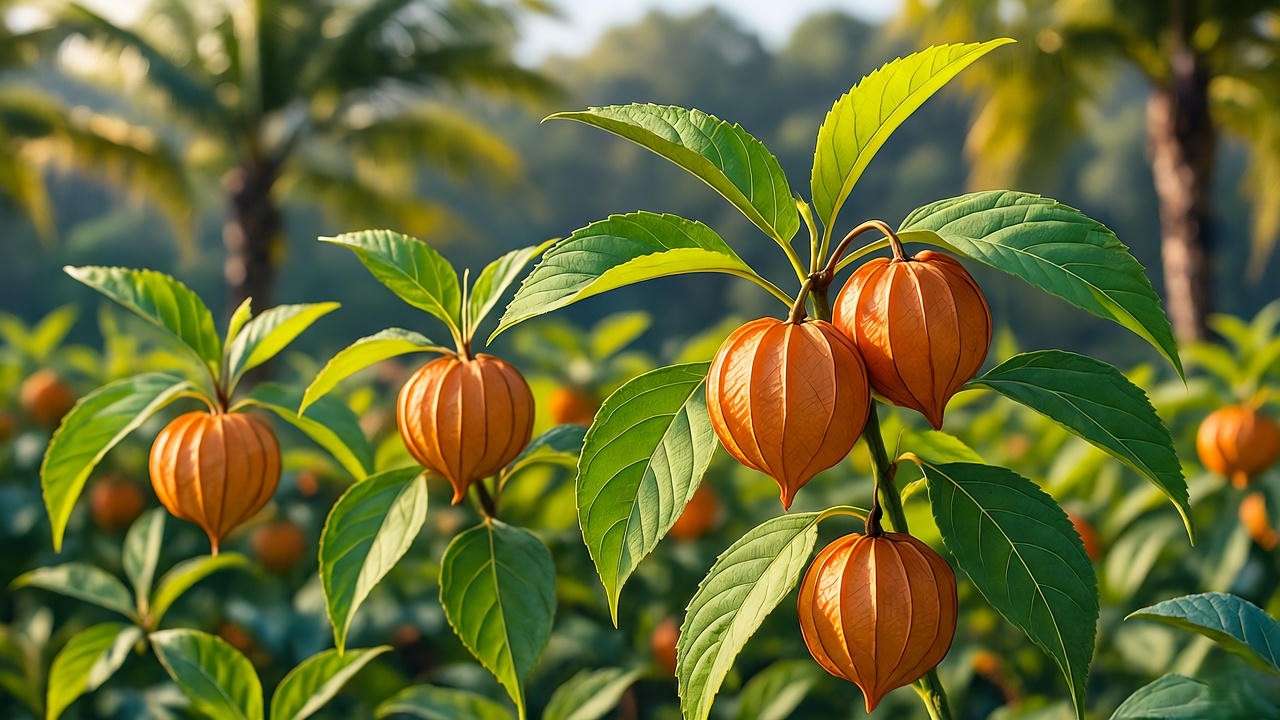
Why Grow Golden Berries?
Golden berry plants are a gardener’s dream: low-maintenance, productive, and versatile. They thrive in containers, raised beds, or traditional gardens, making them perfect for urban gardeners or those with limited space. Their exotic appeal and delicious fruits attract plant lovers seeking something unique. Plus, they’re relatively pest-resistant and adaptable to various climates, from tropical to temperate. If you’re looking for a plant that’s both beautiful and bountiful, golden berries are a fantastic choice. 🌼 Expert Insight: Dr. Maria Lopez, a tropical fruit specialist at the University of Florida, notes, “Golden berries are an excellent crop for home gardeners due to their resilience and high yield potential.”
Tip 1: Choosing the Right Location for Your Golden Berry Plant ☀️
Sunlight Requirements
Golden berry plants crave sunlight to produce those juicy, golden fruits. Aim for a spot with 6-8 hours of direct sunlight daily. If you’re gardening in a shaded area, consider using reflective mulch to maximize light exposure or opt for grow lights for indoor plants. To assess your garden’s light, observe the area throughout the day or use a sunlight meter for precision. Insufficient light can lead to leggy growth and poor fruiting, so prioritize a sunny location to keep your plants thriving. 🌞
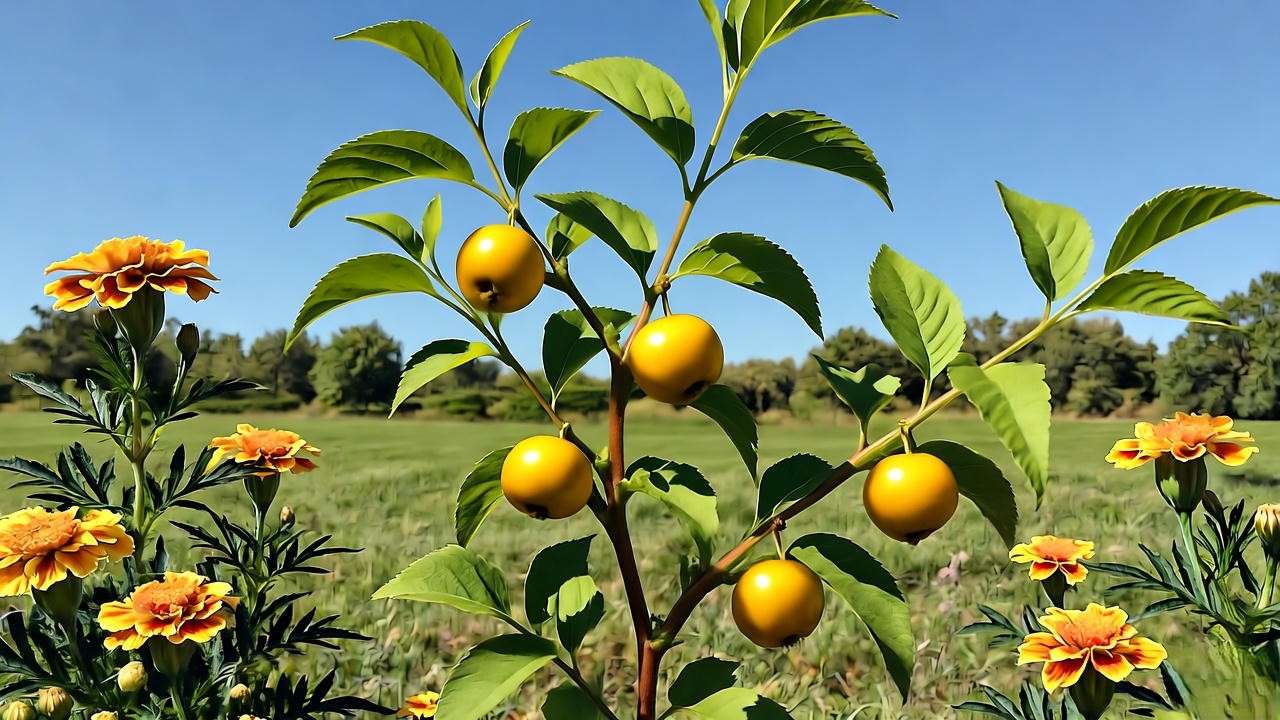
Climate and Temperature Needs
Golden berries prefer warm temperatures between 60-75°F (15-24°C). They grow as perennials in USDA hardiness zones 9-11 but can be cultivated as annuals in cooler zones (4-8). If you’re in a colder region, protect plants from frost with row covers or move container plants indoors during winter. Greenhouses are another excellent option for year-round growth. Below is a quick reference table for climate suitability:
| Hardiness Zone | Suitability | Care Tips |
|---|---|---|
| 9-11 | Perennial | Minimal frost protection needed |
| 4-8 | Annual | Use frost covers or indoor growing |
Practical Tip: Plant golden berries near companion plants like marigolds or basil to deter pests naturally while adding color to your garden. 🌸
Tip 2: Soil Preparation for Thriving Golden Berry Plants 🌍
Ideal Soil Composition
Healthy soil is the foundation of vibrant golden berry plants. These plants thrive in well-draining, loamy soil with a pH of 6.0-6.5. Test your soil with a home kit or send a sample to your local agricultural extension for analysis. If your soil is too clay-heavy, amend it with organic matter like compost or aged manure to improve drainage. Sandy soils benefit from added peat moss to retain moisture. According to a study by the University of California Cooperative Extension, well-drained soil reduces the risk of root rot, a common issue for nightshade family plants. 🌱
Container Gardening for Golden Berries
For small-space gardeners, golden berries shine in containers. Choose a pot at least 12-18 inches in diameter with drainage holes to prevent waterlogging. Fill it with a mix of 60% potting soil, 20% compost, and 20% perlite or sand for optimal drainage. Containers allow flexibility to move plants indoors during cold snaps, making them ideal for cooler climates. Ensure pots are placed in a sunny spot, and rotate them weekly to promote even growth. 🪴 Practical Tip: Create a nutrient-rich soil mix by blending homemade compost with worm castings for an eco-friendly boost.
Tip 3: Planting and Propagation Made Simple 🌱
Starting from Seeds vs. Seedlings
Golden berry plants can be grown from seeds or nursery seedlings, each with unique benefits. Seeds are cost-effective and widely available but require 2-3 weeks to germinate at 70-75°F (21-24°C). Sow seeds ¼ inch deep in seed-starting trays, keeping the soil moist but not soggy. Seedlings, available at nurseries or online, offer a faster start, typically fruiting within 70-100 days. However, they’re pricier and may have limited variety. For beginners, seedlings reduce the risk of early-stage errors, while experienced gardeners may enjoy the challenge of seeds.
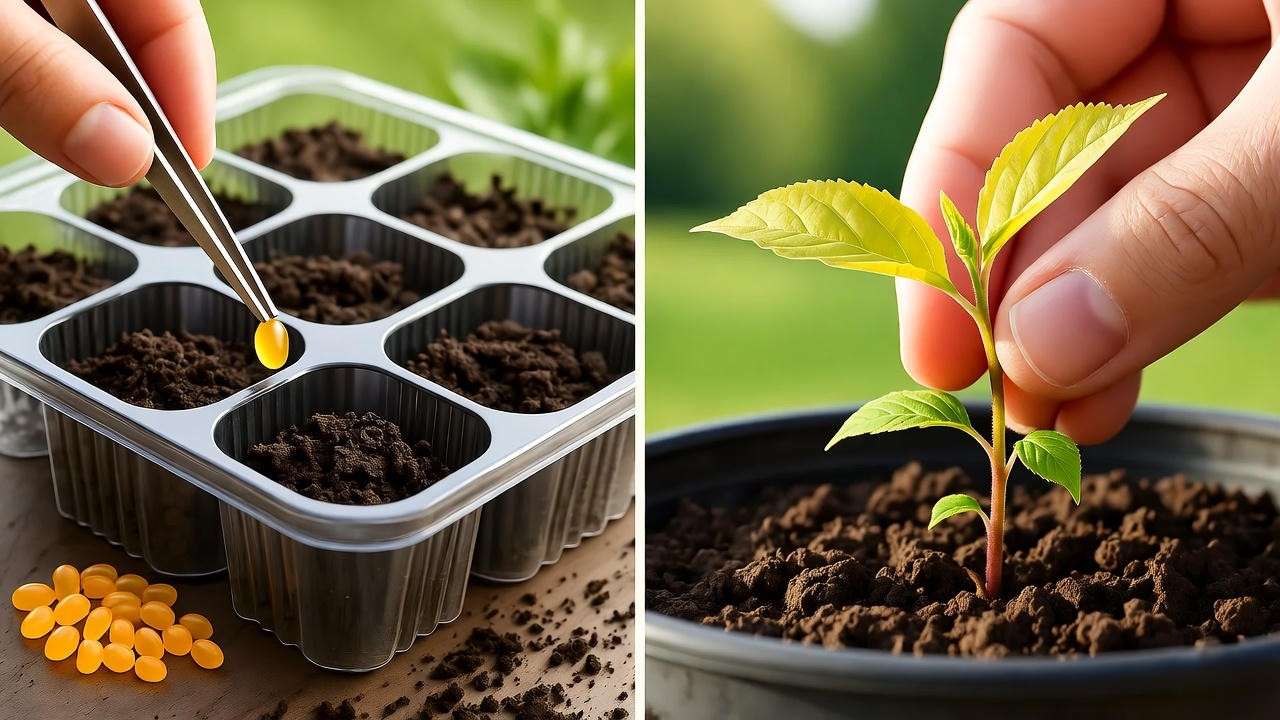
Transplanting Tips
When transplanting seedlings, wait until they’re 4-6 inches tall and have at least two sets of true leaves. Harden them off by gradually exposing them to outdoor conditions over 7-10 days. Dig a hole twice the size of the root ball, spacing plants 2-3 feet apart to allow for bushy growth. Water thoroughly after planting to settle the soil. Avoid transplanting during extreme heat to minimize stress. 🌿 Example: Sarah, a home gardener in California, shared, “I started my golden berries from seeds and was amazed at how quickly they grew once transplanted into my raised beds!”
Tip 4: Watering and Feeding Your Golden Berry Plant 💧
Watering Best Practices
Golden berry plants need consistent moisture, about 1-2 inches of water per week, depending on climate and soil type. Water deeply at the base to encourage strong roots, avoiding overhead watering to prevent fungal issues. Use a soaker hose or drip irrigation for efficiency. Mulch with straw or wood chips to retain moisture and suppress weeds. Overwatering can cause root rot, so check soil moisture with your finger—if the top inch is dry, it’s time to water. 🌾
Fertilizing for Maximum Fruit Yield
Feed your golden berries with a balanced fertilizer (10-10-10 NPK) every 4-6 weeks during the growing season. Organic options like compost tea or fish emulsion work well for eco-conscious gardeners. Avoid over-fertilizing, as excess nitrogen can lead to lush foliage but fewer fruits. A study by the Royal Horticultural Society emphasizes balanced nutrition for optimal fruit production in nightshade crops. Apply fertilizer in the morning to allow plants to absorb nutrients efficiently. 🥗 Practical Tip: Brew your own compost tea by steeping compost in water for 24 hours—your plants will love the nutrient boost!
Tip 5: Pruning and Maintenance for Healthy Growth ✂️
Why Prune Golden Berry Plants?
Pruning is a game-changer for golden berry plants, promoting bushier growth, better air circulation, and higher fruit yields. By removing dead or overcrowded branches, you reduce the risk of disease and encourage the plant to focus energy on producing those delicious, golden fruits. Regular maintenance also keeps your plants looking tidy and manageable, especially in small spaces or containers. According to the Royal Horticultural Society, strategic pruning can increase fruit production by up to 20% in nightshade crops like golden berries. Whether you’re growing in a garden or a pot, a little trimming goes a long way. 🌳
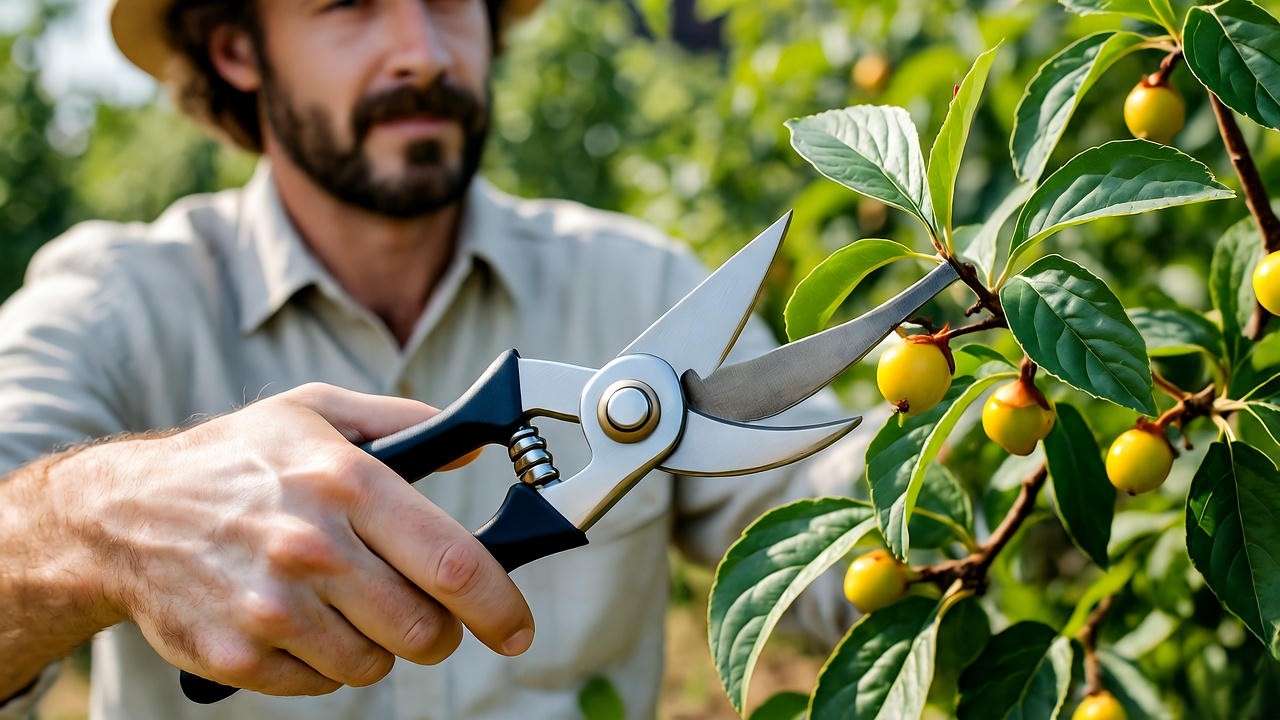
Step-by-Step Pruning Guide
Prune your golden berry plants in late winter or early spring, before new growth begins. Use clean, sharp pruning shears, sterilized with rubbing alcohol to prevent disease spread. Start by removing dead, damaged, or diseased branches. Next, thin out crowded areas to improve airflow, cutting back to a healthy bud or branch junction. For bushier growth, pinch back the tips of young plants to encourage branching. Avoid over-pruning—remove no more than one-third of the plant at a time to prevent stress. After pruning, water and fertilize lightly to support recovery. 🪴 Expert Insight: The University of California’s Master Gardener Program recommends annual pruning to maintain plant vigor and prevent leggy growth in tropical fruit crops.
Tip 6: Pest and Disease Management 🐞
Common Pests
Golden berry plants are relatively resilient, but they can attract pests like aphids, whiteflies, and spider mites. Aphids cluster on new growth, sucking sap and weakening plants, while whiteflies spread viral diseases. Spider mites, tiny and web-spinning, thrive in dry conditions. Combat these pests with organic methods: spray neem oil (diluted per instructions) weekly or introduce beneficial insects like ladybugs, which devour aphids. Regularly inspect leaves for signs of infestation, especially under leaves where pests hide. A strong blast of water can dislodge early infestations, reducing the need for treatments. 🐜
Preventing Diseases
Fungal diseases like powdery mildew and root rot can affect golden berries, especially in humid or poorly drained conditions. Powdery mildew appears as white patches on leaves, while root rot causes wilting and yellowing. Prevent these by ensuring proper spacing (2-3 feet between plants) for airflow and watering at the base, not overhead. If mildew appears, apply a baking soda solution (1 tablespoon per gallon of water) as an eco-friendly remedy. Well-drained soil, as emphasized by Cornell University’s plant pathology research, is critical to avoiding root rot. Regular monitoring and early action keep your plants healthy. 🌾 Practical Tip: Mix a DIY pest-repellent spray with 1 teaspoon of liquid soap, 1 tablespoon of minced garlic, and 1 quart of water. Spray lightly on leaves to deter pests.
Tip 7: Harvesting and Enjoying Your Golden Berries 🍒
When and How to Harvest
The moment you’ve been waiting for—harvesting those golden berries! Fruits are ready when they turn a rich golden-yellow and their papery husks dry out, typically 70-100 days after planting. Gently twist the berries off the plant to avoid damaging branches. Harvest in the morning when fruits are firm and flavorful. Regular picking encourages more fruit production, so don’t let ripe berries linger. If you’re unsure about ripeness, taste a berry—it should be sweet with a hint of tartness. Avoid unripe green berries, as they’re bitter and less palatable. 🍇
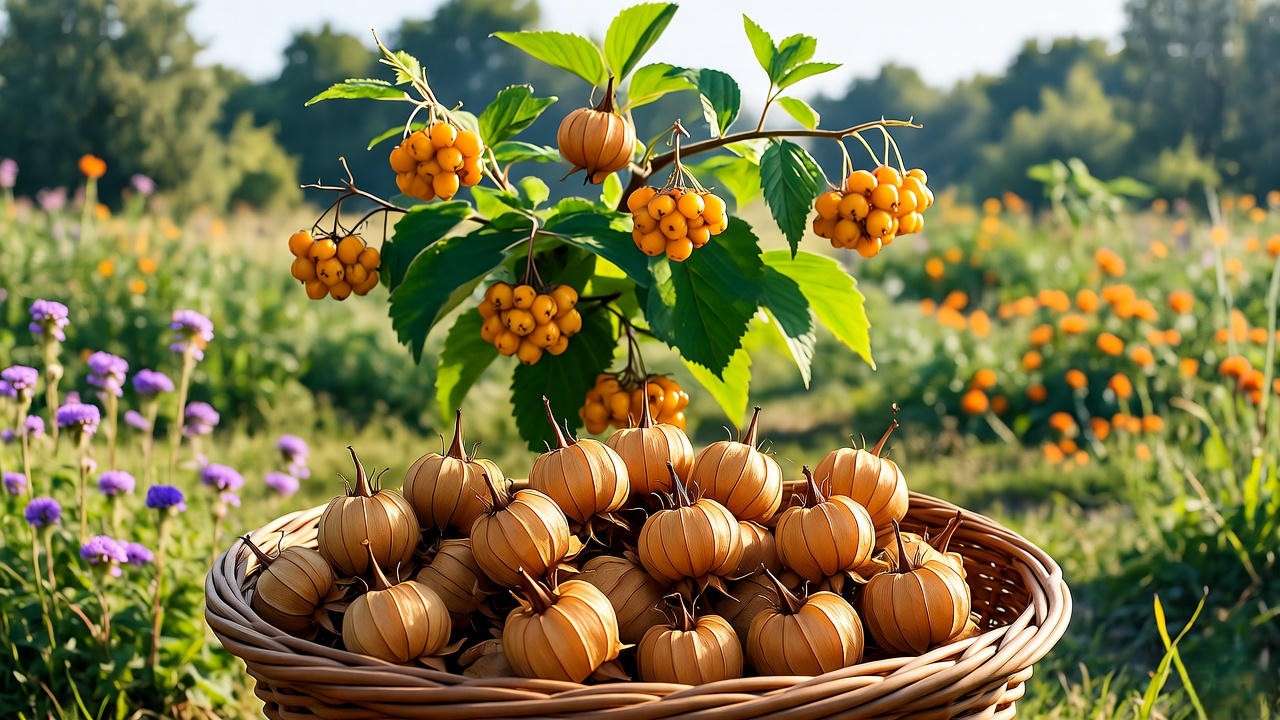
Storing and Using Golden Berries
Golden berries store beautifully, thanks to their protective husks. Keep them in a cool, dry place for up to a month or refrigerate for extended freshness. Remove husks before eating or cooking. These versatile fruits shine in recipes: toss them in salads, blend them into smoothies, or make a tangy golden berry jam. For a quick treat, try this simple recipe: Golden Berry Salsa—combine chopped golden berries, red onion, cilantro, lime juice, and a pinch of chili powder for a vibrant dip. Your taste buds will thank you! 🥗 Example: Lisa, a gardener in Oregon, shared, “I made golden berry jam from my harvest, and it’s now a family favorite for breakfast!”
Troubleshooting Common Golden Berry Plant Problems 🛠️
Why Isn’t My Plant Fruiting?
Few things are more frustrating than a golden berry plant that won’t fruit. Common culprits include insufficient sunlight (less than 6 hours daily), poor pollination, or nutrient imbalances. Ensure your plant gets enough sun and consider hand-pollinating by gently shaking branches or using a small brush to transfer pollen between flowers. Over-fertilizing with nitrogen-heavy products can lead to lush leaves but no fruit—switch to a balanced fertilizer (10-10-10 NPK). If pollination is the issue, attract bees with nearby flowering plants like lavender. 🐝
Yellowing Leaves and Other Warning Signs
Yellowing leaves often signal overwatering, nutrient deficiency, or pest issues. Check soil moisture—soggy soil suggests root rot, so improve drainage and reduce watering. If leaves are pale, apply a balanced fertilizer or test soil for deficiencies (e.g., iron or magnesium). Pests like spider mites can also cause yellowing; inspect leaves and treat with neem oil if needed. Below is a troubleshooting table for quick reference:
| Symptom | Possible Cause | Solution |
|---|---|---|
| Yellowing leaves | Overwatering, nutrient lack | Adjust watering, fertilize |
| No fruit | Poor pollination, low light | Hand-pollinate, increase sun |
| Wilting | Root rot, drought | Improve drainage, water consistently |
Golden Berry Plant Care in Different Climates 🌎
Growing in Tropical vs. Temperate Regions
Golden berry plants adapt to various climates with the right care. In tropical regions (USDA zones 9-11), they grow as perennials, producing fruit year-round with minimal effort. Ensure good drainage and occasional pruning to maintain vigor. In temperate zones (4-8), treat them as annuals or grow in containers to bring indoors during winter. Use greenhouses or high tunnels for extended seasons in cooler climates. Tailoring care to your region ensures success, whether you’re in sunny Florida or chilly Vermont. 🌞
Overwintering Tips
In colder climates, overwintering golden berries requires planning. For garden plants, apply a thick layer of mulch (straw or bark) around the base to protect roots from frost. Container plants can be moved indoors to a sunny windowsill or under grow lights, maintaining temperatures above 50°F (10°C). Water sparingly during winter dormancy. The USDA’s Plant Hardiness Zone Map is a great resource for determining your region’s needs. With these precautions, you can enjoy golden berries year after year. ❄️ Expert Insight: The University of Minnesota Extension recommends overwintering tender perennials in containers to extend their lifespan in cold climates.
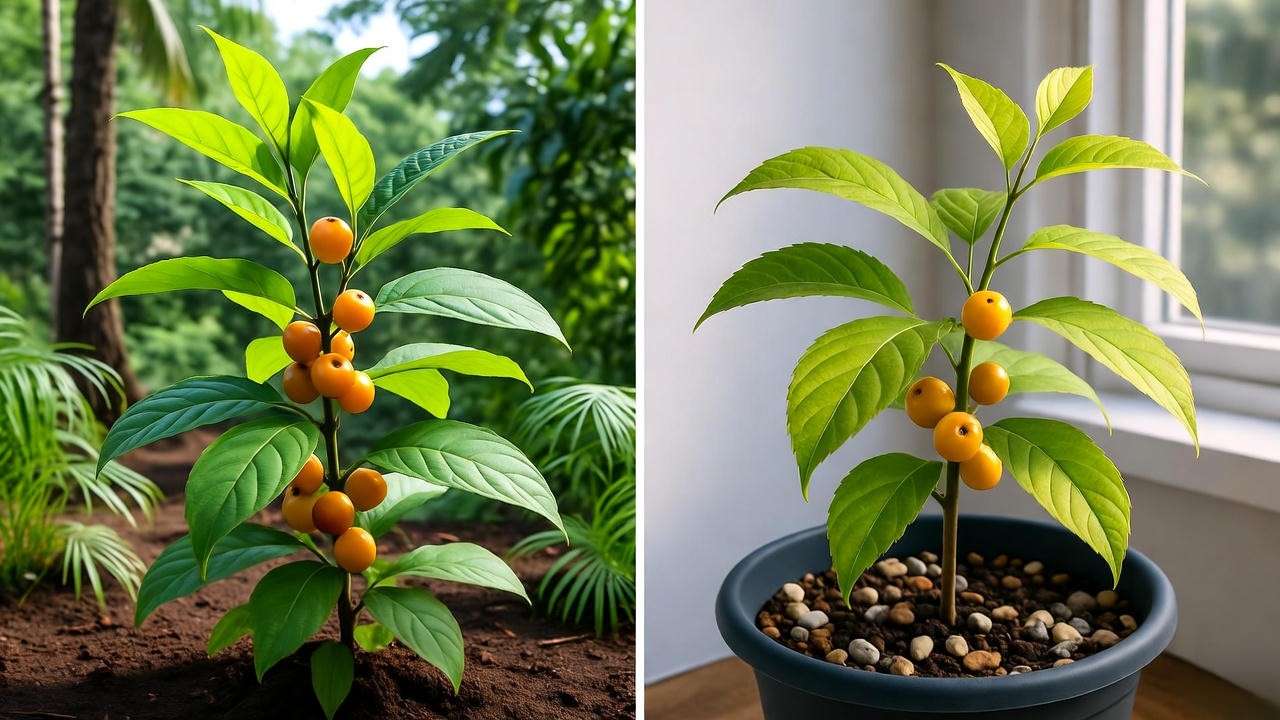
FAQs About Golden Berry Plant Care ❓
Q1: How long does it take for golden berry plants to produce fruit? A: Golden berries typically fruit 70-100 days after planting, depending on the variety and growing conditions. Seedlings fruit faster than seed-started plants.
Q2: Can golden berries grow in pots indoors? A: Yes! Use a 12-18-inch pot with well-draining soil and place it in a sunny spot or under grow lights. Ensure good airflow to prevent fungal issues.
Q3: Are golden berry plants safe for pets? A: Ripe fruits are safe in moderation, but unripe berries and plant leaves are toxic to pets. Keep plants out of reach of cats and dogs.
Q4: What’s the best way to prevent pests on golden berry plants? A: Use organic sprays like neem oil, encourage beneficial insects, and inspect plants weekly to catch infestations early.
Q5: How do I know if my golden berries are ripe? A: Ripe berries are golden-yellow with dry, papery husks. They should taste sweet-tart when sampled.
Conclusion: Grow Your Own Golden Berry Bounty! 🌿🍇
Growing golden berry plants is a rewarding journey, blending ease of care with the thrill of harvesting your own exotic fruits. By following these seven essential tips—choosing the right location, preparing ideal soil, planting properly, watering and feeding wisely, pruning effectively, managing pests, and harvesting at the perfect time—you’ll cultivate vibrant, fruit-filled bushes that elevate your garden. As a horticulturist, I’ve seen countless gardeners transform their spaces with these resilient plants, and you can too! Start your golden berry adventure today and share your progress with us—tag your garden photos with #GoldenBerrySuccess on social media. 📸 Explore more plant care guides on our website to keep your green thumb thriving. Happy gardening! 🌟

